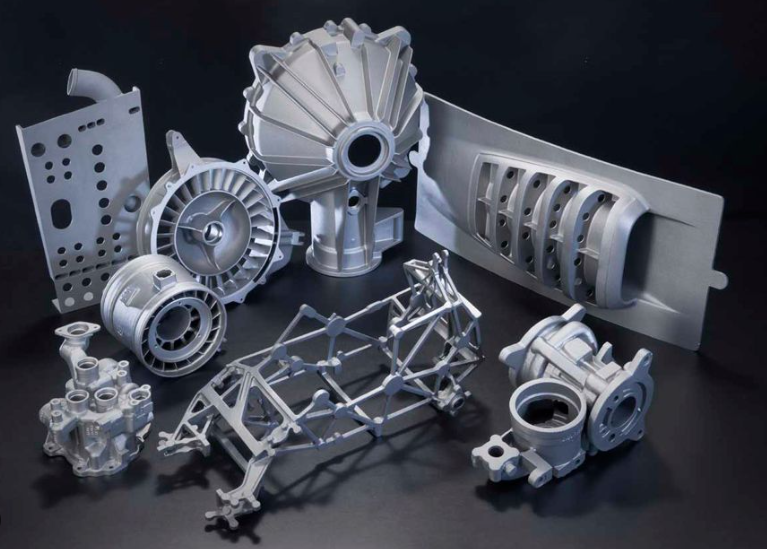Magnesium die casting is a popular manufacturing process known for its lightweight, high-strength properties and excellent dimensional accuracy. To ensure successful and efficient magnesium die casting, the proper lubrication of the die components is essential. This article explores the latest lubrication technology and trends in magnesium die casting, highlighting their role in improving process efficiency, part quality, and overall productivity.

- Importance of Lubrication in Magnesium Die Casting:
Lubrication plays a vital role in magnesium die casting for several reasons:
Tool Protection: Proper lubrication reduces friction and wear between the die components and the molten magnesium alloy. It helps protect the dies from excessive heat, prolonging their lifespan and reducing maintenance requirements.
Mold Release: Effective lubrication ensures smooth and reliable ejection of the cast part from the die cavity. It minimizes the risk of part sticking or deformation, resulting in improved surface finish and dimensional accuracy.
Surface Quality: The right lubrication minimizes surface defects, such as soldering or sticking, by creating a barrier between the molten metal and the die surface. This leads to higher-quality castings with improved aesthetics.
- Lubrication Techniques and Technologies:
Spray Lubrication: This conventional method involves applying a lubricant, often in the form of a water-based emulsion, onto the die surface using spray nozzles. Spray lubrication provides consistent coverage and cooling during the casting process.
Dry Lubrication: Dry lubrication techniques, such as graphite-based coatings or solid film lubricants, offer an alternative to traditional water-based lubricants. They provide excellent lubrication properties while minimizing water usage and environmental impact.
Lubricant Additives: Advanced lubricant formulations include additives designed specifically for magnesium die casting. These additives enhance lubricity, reduce friction, and improve the release properties of the lubricant, resulting in improved casting quality and productivity.
- Trends in Magnesium Die Casting Lubrication:
Environmentally Friendly Lubricants: With increasing emphasis on sustainability, there is a growing demand for environmentally friendly lubricants in magnesium die casting. Manufacturers are exploring lubricant formulations that are biodegradable, low in VOCs (volatile organic compounds), and comply with regulatory standards.
High-Temperature Lubricants: Magnesium die casting often involves high temperatures, which can degrade traditional lubricants. The industry is witnessing advancements in lubrication technology to develop high-temperature lubricants capable of withstanding the rigorous conditions and providing consistent performance.
Process Monitoring and Control: With the advent of Industry 4.0 and smart manufacturing, there is a shift towards real-time process monitoring and control in magnesium die casting. This includes monitoring lubrication parameters, such as lubricant concentration, application rate, and coverage, to ensure optimal lubrication performance and identify potential issues before they impact production.
- Benefits and Challenges:
The adoption of advanced lubrication technology in magnesium die casting offers several benefits, including:
- Improved part quality with reduced surface defects and improved dimensional accuracy.
- Extended die life and reduced maintenance requirements.
- Enhanced productivity and efficiency through optimized casting cycles and reduced downtime.
- Reduced environmental impact with the use of eco-friendly lubricants.
However, there are challenges to consider, such as:
- Compatibility: Selecting a lubricant that is compatible with the specific magnesium alloy and die material is crucial to ensure proper performance and avoid potential issues such as chemical reactions or surface contamination.
- Process Optimization: Finding the right lubrication parameters, such as application rate, concentration, and coverage, requires thorough testing and optimization to achieve optimal results for each casting cycle.
- Cost Considerations: Advanced lubrication technologies may come at a higher cost compared to traditional lubricants. Manufacturers need to assess the cost-effectiveness and overall benefits of implementing these technologies based on their specific production requirements and quality standards.
- Training and Expertise: Adopting new lubrication technologies may require training and expertise to ensure proper application and maintenance. Manufacturers should invest in training programs and work closely with lubrication suppliers to maximize the benefits of the chosen lubrication technology.

